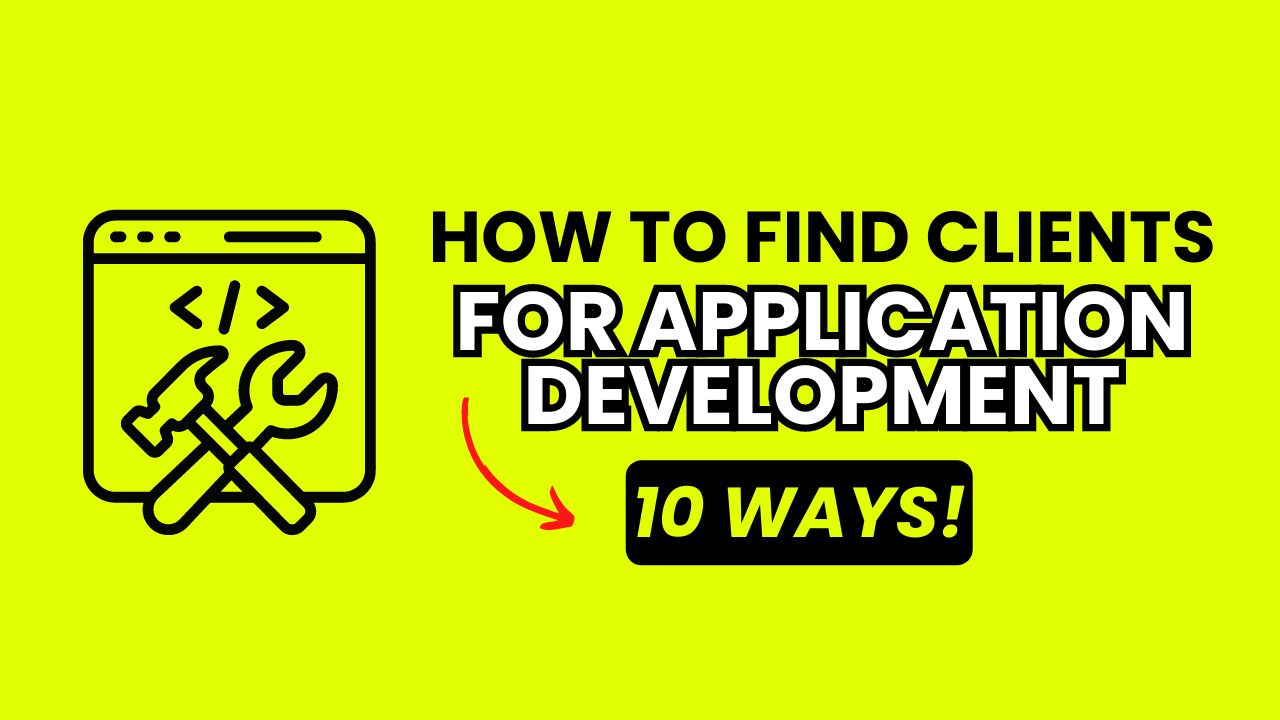Remember when you first developed that application?
The hours you spent lost in a forest of code, the late nights sipping coffee, and the triumphant moment when everything clicked into place.
You felt like a wizard, didn’t you?
Conjuring an exceptional solution out of mere lines of code, taming the untamed logic, shaping chaos into order.
As the day broke and your application came alive, you looked at it – a thing of beauty, a testament to your skill and dedication.
You became an architect of the digital world.
You weaved the magic of programming languages to create a product that solves problems, that makes life a tad bit easier, that gives you an immense sense of pride.
But here’s the spoiler: The real sorcery, the real test of your software developer skills, lies not in crafting the application, but in finding those elusive creatures known as clients.
Yep, you read it right.
Clients.
Those wonderful beings who will appreciate your work, see the value in it, and most importantly, pay you for it.
Now, you might think, “Surely, finding clients is easier than decoding the mysteries of Javascript?”
But this is where the plot thickens.
No magic wand, no enchanted incantation, no map marked with an ‘X’ can guide you to your perfect clientele.
But there’s no need for panic!
For we have something far better than a magic wand.
We bring to you a definitive guide, carefully brewed with years of industry experience and insights.
Summary
This guide transforms the daunting task of finding clients for application development into a fun-filled adventure.
It’s not just a collection of expert advice, but a toolkit that will empower you to cut through the mists of uncertainty and stand tall as a conqueror of the client-hunting game in 2023.
So buckle up, get ready to take some notes, and let’s get started.
Shall we?
What type of Clients need App Development Services?

When it comes to the types of clients in need of app development services, the roster is as diverse as the countless stars in the digital galaxy.
First off, we have businesses – those big and small, budding start-ups, and even the titans of industry.
They are the ones eager to make their mark in the app world, to enhance their business, to engage their customers better, or to simply streamline their processes.
Then, there are entrepreneurs and innovators, the visionaries with brilliant ideas for the next game-changing app but lacking the technical expertise to bring it to life.
They need your magic touch.
Don’t forget about the government organizations and NGOs.
They too require your digital prowess to create software that disseminates information or even garner support for a cause.
Lastly, there’s the ‘Others’ category.
You know, the ones that don’t fit neatly into any box.
These could be educational startup wanting an interactive learning app, or perhaps health and wellness enthusiasts looking for a unique fitness app.
In essence, anyone with a need or a problem that can be solved through the wizardry of app development could potentially be your client. And it’s your job to find them and wave your magic wand of solutions.
Exciting, isn’t it?
Groundwork Phase – Laying the Building Blocks

Alright, now that we’ve identified who might need your app development skills, it’s time to roll up our sleeves and start the prep work.
Remember, every great adventure needs a solid game plan, and finding clients is no exception.
Just like you wouldn’t dive into coding an application without a blueprint, the same principle applies here.
Your quest for buyers demands a sturdy foundation – a meticulously laid groundwork that will serve as your launchpad towards success.
You see, even the most seasoned wizards know that preparation is the secret ingredient to potent magic.
That’s why this phase is all about understanding your ideal customer profile, sharpening your unique value proposition, and polishing your professional image.
It’s about crafting the perfect spell to enchant your future clients.
So, are you ready to delve into the heart of preparation?
Let’s start laying down the groundwork.
Start with Your ICP
First stop on our groundwork expedition: identifying your Ideal Customer Profile (ICP).
Think of your ICP as a sketch of your perfect customer – the one who not only needs your services but values them, pays on time, and is an absolute joy to work with.
The process of defining your ICP involves answering a set of questions.
- Who are they?
- What are their needs?
- What drives them?
- What industry do they operate in?
- What’s their company size?
- What challenges are they facing?
Is your ideal customer a small business owner desperate for an e-commerce app to boost their sales?
Or perhaps an educational institution looking to revolutionize learning with an innovative app?
Or a healthcare organization aiming to streamline their processes through a tailored app solution?
Your ICP isn’t just about who the customer is, but also about their problems and how you can solve them.
So take a deep dive into understanding the industries, company sizes, decision-makers, and the specific pain points of your ideal clients.
Remember, every detail counts!
The clearer your ICP, the better your strategies will be.
After all, you wouldn’t start a coding project without a clear understanding of the end goal, would you?
The same applies here.
Know your client and the path to them will illuminate itself.
Create your Unique Value Proposition
Now that you’ve sketched the portrait of your ideal client, let’s proceed to the next piece of our groundwork puzzle – crafting your Unique Value Proposition (UVP).
In the bustling bazaar of app development agencies, what makes you stand out? Why should customers choose you over others?
The answer to these lies in your UVP.
Your UVP is the magic spell you cast on prospective clients.
It’s that unique blend of your expertise, your approach, and the specific benefits you offer, all wrapped up in a compelling message.
Is it your knack for creating user-friendly interfaces? Your wizardry with a particular coding language? Your exceptional post-launch support? Or is it your track record of turning around projects in record time?
Identify what sets you apart and articulate it in a clear, concise, and compelling manner.
Remember, your UVP isn’t a laundry list of your services, but a compelling message that zeroes in on how exactly you can solve a client’s problem better than anyone else.
So get creative, be bold, and let your unique magic shine.
After all, even in a sea of stars, there’s always one that shines the brightest, right?
Here’s an example of great UVP from Stripe:
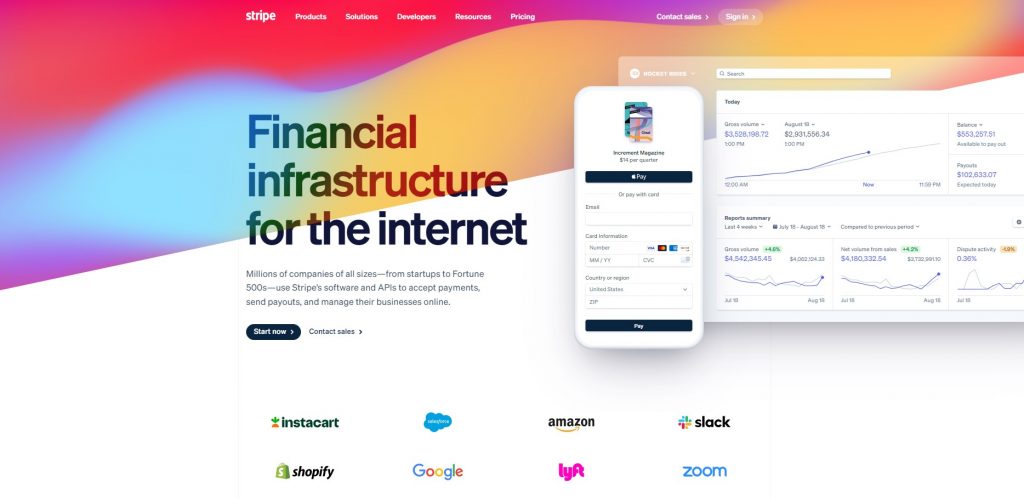
Polish your Portfolio
Think of your portfolio as a shining amulet, an artifact that holds the power to awe and convince prospective clients. Your portfolio is tangible proof of your app development prowess. It showcases not just your software skills and capabilities, but also your experience, creativity, and problem-solving abilities.
Your portfolio should display a selection of your best works. These could be the apps you’re most proud of or projects that presented challenging problems that you solved with your coding magic. Also, here you should aim to add stuff you did for some bigger clients as they add way more credibility than something you did for some small startup no one knows about.
Each piece in your portfolio should tell a story – about the client’s needs, the challenges faced, and how you turned those challenges into triumphs.
But remember, it’s not just about what you include, but how you present it.
Use clear and concise language to describe each project. Include visuals, testimonials, and case studies to create an engaging narrative.
If possible, present tangible results such as improved user engagement, increase in sales, or any other metrics that can demonstrate the impact of your work.
A well-crafted portfolio is like your magical tome – it can captivate prospective buyers and persuade them that you are the wizard they need.
So take the time to polish it, to make it gleam with the best of your work.
Let your portfolio be a testament to your magic.
Build your Website
Let’s move on to the next magical instrument in your arsenal – your website.
Think of your website as your digital fortress, your headquarters in the online realm.
It’s where your prospective buyers will first get to know you, see your work, and decide if they want to knock on your door.
Your site should not only be visually appealing but also user-friendly and responsive.
Remember, a poorly designed or hard-to-navigate site could deter prospective clients.
You wouldn’t want your audience to get lost in the labyrinth, would you?
After all, you’re an architect of the digital world, and your site is a reflection of your skills.
Ensure your site communicates your Unique Value Proposition clearly, showcases your polished portfolio effectively, and provides comprehensive offer explanation.
A blog section with helpful, relevant content can also position you as an authority in app development and drive more traffic to your site.
Like a well-crafted spell, your website should draw prospective clients in, enchant them with your offerings, and make it easy for them to get in touch with you.
So conjure up a site that’s not just a digital business card, but a portal to the world of magic you can create.
Here’s an example of a well-built website:
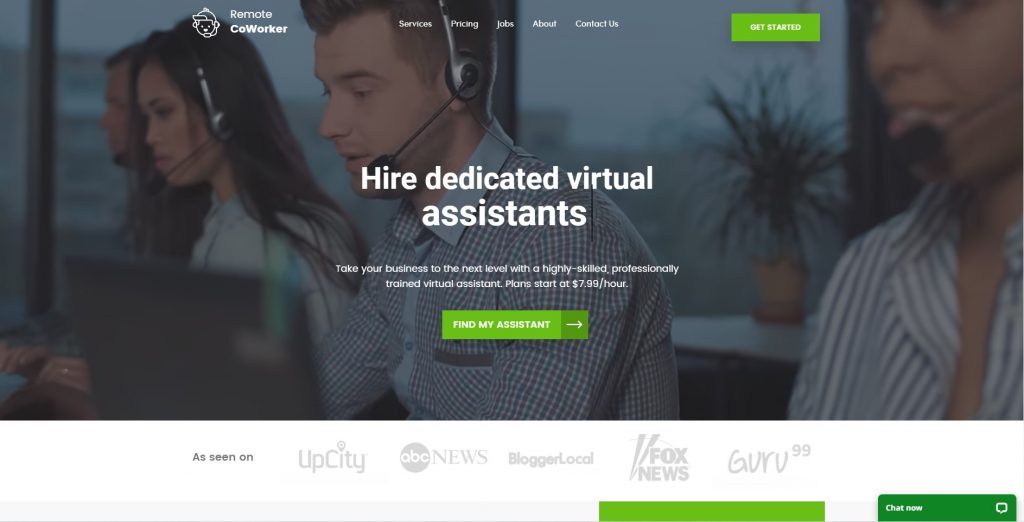
Set up your Social Media
Next up on our list: Social Media.
In today’s age, this is your magical conduit to reach out and connect with prospective clients, to build relationships, and to showcase your expertise.
It’s a vibrant marketplace, buzzing with opportunities.
To set up your social media start by identifying the platforms where your ideal customers are most active.
Is it LinkedIn, the professional’s hub, where you can rub virtual shoulders with decision-makers? Or is it Facebook with its numerous groups and expansive reach?
Perhaps it’s Instagram, the realm of visuals, where you can showcase your work in a dynamic way.
Ensure your profiles are complete, professional, and consistent across platforms.
Each platform should be like a different chapter of the same book – telling the same story, but in a different way.
Share posts that provide value, demonstrate your expertise, and engage your audience.
Remember to interact, to build relationships, and not just broadcast your offers.
In essence, this can be a magical bridge between you and your prospective clients.
So get on there, wave your virtual wand, and let your online presence speak volumes about your app development magic!
Utilize Light CRM in the Start
As your magical journey to find customers advances, you’ll need an efficient system to manage your leads and relationships – that’s where a CRM (Customer Relationship Management) tool comes in.
Picture your CRM as your magical book of records, your grimoire that stores all vital information about your prospective and existing clients.
Starting with a light CRM system can help you track interactions, schedule follow-ups, and analyze the effectiveness of your strategies.
It streamlines your process, so you can focus more on creating app magic and less on juggling information.
There are various light CRM options available, some even offer free versions for beginners.
One such tool is ZeroIn and although its originally an all-in-one email discovery solution, it has a complete CRM for effortless organization and management of valuable prospect data.
Choose one that best fits your needs and watch it transform your customer hunt into an organized, manageable, and efficient process.
Remember, magic isn’t just about casting spells, but also about maintaining your wizard’s lair, or in this case, your customer relationships.
Establish Pricing Structures and Bundles
So, you’ve laid the groundwork, built your online presence, and are ready to handle your customers effectively.
But there’s another piece of this puzzle – your pricing policies and packages.
Much like choosing the right spell, pricing your services correctly is crucial.
Set the price too high, and you might deter prospective clients.
Too low, and you undermine the value of your work.
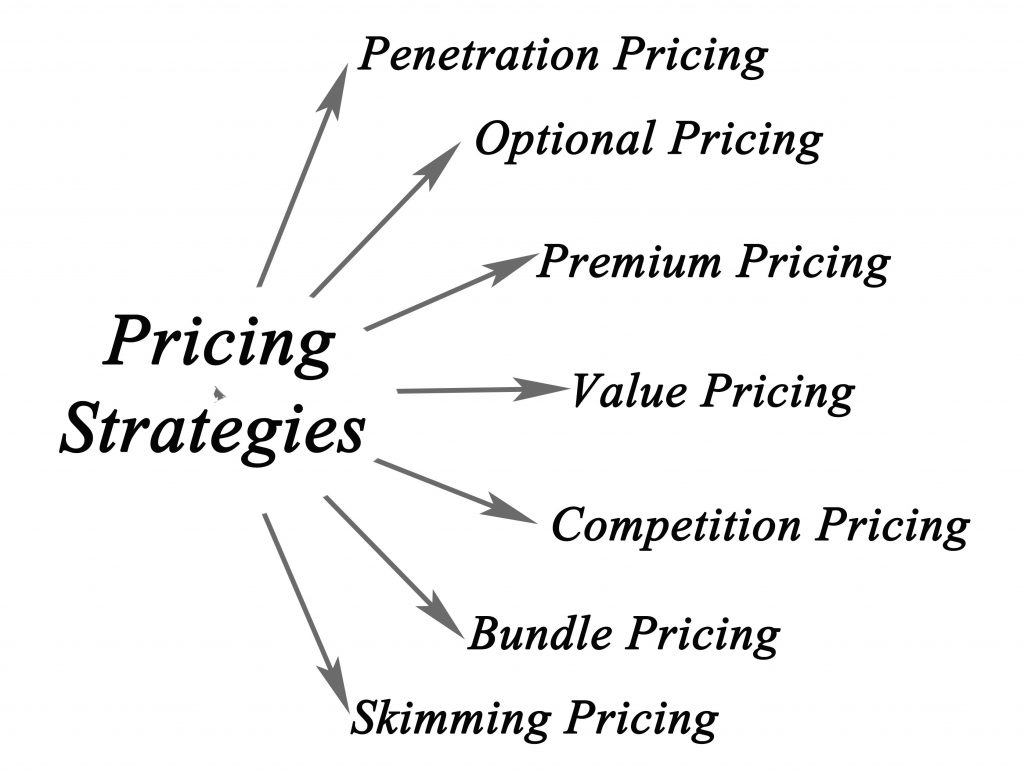
Begin by researching the market.
What are other wizards, ahem, developers charging? What do your ideal customers seem willing to pay?
Then, consider your costs, expertise, and the unique value you provide.
Once you have your base pricing, think about packages.
Can you bundle services together for a more comprehensive solution? Perhaps a ‘Start-up’ package for small businesses, or a ‘Premium’ package for larger enterprises?
This way, customers can choose what best suits their needs and budget.
Remember, transparency is key.
Clearly communicate what each package includes and what additional charges may apply.
After all, no one likes hidden surprises, unless it’s a hidden magic trick, of course!
So go ahead, craft your pricing spell.
It’s not just about the numbers, but about the perceived value.
Let your customers know that your magic is worth every penny.
Performing Phase – 10 ways to get more clients for Application Development Services
With your groundwork well laid and your preparation phase done, it’s time to wield your magic wand and step into the spotlight.
Welcome to the performing phase – where you actively reach out, enchant, and convert prospective clients.
You see, magic isn’t just about crafting intricate spells in solitude.
It’s about dazzling audiences, about making them gasp in awe and applaud in admiration.
In our realm, it’s about finding those who need our app development magic, and convincing them that we are the wizards they’ve been seeking.
Here we present to you, not one, not two, but ten magical strategies to get more customers for your software development business in 2023.
These are not mere tricks, but well-honed strategies, conjured from industry insights and expert experiences.
So buckle up, adjust your wizard’s hat, and let’s and let’s dive in!
Present Yourself as an Expert in Designated Field
Our first stop on this quest is all about positioning yourself as an expert in your field.
You’ve mastered the art of coding magic, but now it’s time to let the world know about it.
It’s about sharing your knowledge, insights, and experiences to build trust and credibility with prospective clients.
Start by writing posts on social media.
Write about the latest trends in app development, share tips and tricks, or explore case studies of your past projects.
This not only drives traffic to your site but also showcases your expertise.
Guest posting on reputable industry blogs or speaking at events and webinars can also boost your visibility and authority.
Participate in online forums, engage in discussions, answer questions.
The goal here is not just to demonstrate your software development skills but also to become a resource people turn to for solutions.
Remember, the more visible and helpful you are, the more trust you build.
And trust, my dear wizard, is the most potent magic of all.
So go ahead, share your wisdom, let your expertise shine, and watch as potential customers are drawn to your magic!
Ask for Referrals from your Existing Clients
Now, let’s move onto a technique as old as magic itself – word of mouth.
But in our world, we call it referrals.
Referrals are about leveraging the relationships you’ve already built and asking your satisfied customers to spread the word about your exceptional software development skills.

If you wonder why they work so well, they work because they’re based on trust.
When a satisfied customer recommends you, it comes with an inherent endorsement of your software skills and credibility.
So, don’t hesitate to ask your customers if they know someone who could benefit from your help.
To encourage referrals, consider setting up a referral program.
Offer a discount on future work or a small gift as a token of appreciation.
Remember, a good referral is like a magic spell, it can open doors to new opportunities.
So, don’t forget to use this powerful tool in your quest.
Ask for referrals, cast your network wide, and let the magic of trust bring new buyers to your doorstep.
Plan and Attend Events
As an app developer, participating in events can be a goldmine of opportunities.
Whether you’re hosting a workshop, speaking at a seminar, or simply attending a tech conference, each occasion provides a platform to showcase your expertise, network with prospective clients, and learn about industry trends.
The easiest way to get started is by hosting webinars or live Q&A sessions.
Such events provide value to attendees while highlighting your knowledge in app development.
If hosting isn’t your thing, speaking at industry events or panel discussions can equally position you as a thought leader.
Additionally, attending networking events, trade shows, and conferences provide an opportunity to connect with prospective buyers face-to-face, or virtually in some cases. And keep in mind, it’s all about initiating conversations, understanding needs, and subtly marketing your offers.
So, roll up your sleeves and dive into the event pool. Your next big customer could be a handshake or a virtual meeting away!
Partner Up with Complementary Businesses
Forming strategic partnerships with businesses that complement yours is another effective way to tap into new buyer pools.
This approach involves identifying businesses that offer services related to, but not exactly like, yours.
For instance, you could team up with graphic design agencies, digital marketing firms, or IT consultancies.
Such partnerships are a win-win for both sides.
You refer customers to each other, broadening your respective networks.
This can especially be fruitful if your partner company has an established clientele who trust their recommendations.
Consider crafting a mutual referral program or offering bundle service to provide more comprehensive solutions to your clients.
It’s all about creating synergies where both parties benefit.
Remember, successful partnerships aren’t built in a day, they’re the result of shared goals, mutual respect, and ongoing cooperation.
So, foster these relationships, sow the seeds of collaboration, and witness as your client base flourishes with new opportunities.
Use Email Lists and Newsletter

Venturing into the world of email marketing, we find an old yet powerful method to attract, engage, and convert prospective clients.
Despite the rapid evolution of digital marketing, email continues to be an effective channel to directly communicate with your prospects even in 2023.
Building an email list starts with offering value.
Perhaps it’s a free eBook about app development trends, or a subscription to your insightful blog.
Once visitors to your site opt-in to receive emails, you’ve got a direct line to their inbox.
However, tread with care.
Overwhelming your audience with daily emails can quickly land you in the dreaded spam folder.
The key is to send relevant, value-packed content that your subscribers look forward to.
A monthly newsletter could include a roundup of your blog posts, updates on your recent app development projects, or insights into the latest industry trends.
This not only keeps your audience engaged but also positions you as a trusted expert in app development.
Personalization is another critical element.
The simple act of addressing the recipient by their name can make your emails feel more like a conversation than a sales pitch.
Don’t overlook the power of a well-crafted email campaign. It can serve as a gentle, constant reminder of your presence in your prospective client’s world.
By providing consistent value and fostering a personal connection, you’ll be the first one they think of when they need help with application development.
Remember, email marketing isn’t about selling, it’s about building relationships and trust, which eventually leads to more clients. So, craft your emails wisely, fill them with value, and let them serve as a bridge connecting you to your future clients.
Don’t forget Job Listing Websites
Job listing sites like Indeed, Glassdoor, or LinkedIn are typically seen as platforms for individuals seeking employment. However, they can be an unconventional yet effective tool for businesses like yours to find prospective clients.
How does this work?
Companies that post a job opening for an app developer clearly have a need for your help.
They may be looking to hire a full-time employee, but that doesn’t mean they’re not open to hiring a freelancer or outsourcing the project, especially if you can provide them with top-notch service at a more affordable rate.
Your first step is to find these listings.
Set up alerts for app development jobs on these platforms and analyze the posts you find.
They are often filled with valuable information about the type of projects the company is undertaking and the specific software skills they’re looking for.
Next, craft a personalized outreach message.
Don’t just sell your services, but explain how you can solve their problem more efficiently.
Maybe you have experience in a niche they’re exploring, or perhaps you can offer a faster turnaround time.
Remember to be respectful and professional in your approach. You’re not applying for the job, you’re offering a potential solution to their needs.
In a sea of job seekers, be the solution provider.
It’s an out-of-the-box approach that could lead to fruitful relationships with companies you may not have found otherwise.
So, polish your proposal writing skills, set up those job alerts, and start offering your magic solutions.
Who knows?
Your biggest customer could be just a job listing away.
Take SEO seriously

In the digital world, being easily discoverable is half the battle won.
This is where Search Engine Optimization (SEO) comes in, playing a key role in enhancing your online visibility.
Essentially, SEO is about making it easier for potential buyers to find you when they’re searching online for an app developer.
To get started, research relevant keywords that your potential buyers might use when searching for solutions like yours.
Incorporate these keywords naturally into your website content, blog posts, and metadata to increase your chances of ranking higher on search engine results pages.
Writing valuable and keyword-rich content for your blog can also enhance your SEO.
Sharing insights on app development trends, tips, and case studies will not only position you as an authority in your field but will also help attract organic traffic.
SEO is a long-term strategy, and results don’t show up overnight.
It requires continuous optimization and updating as search engine algorithms evolve.
But, with patience and consistency, SEO can be a powerful tool in your arsenal, leading prospective buyers right to your doorstep.
Capitalize on Organic Social Media Opportunities

We’re living in an era where almost everyone has a digital footprint.
Platforms such as LinkedIn, Twitter, Facebook, and Instagram are not just for sharing vacation photos or food snaps anymore.
These platforms have become powerful tools for businesses to connect with prospective clients, showcase their offers, and build a brand.
Starting with LinkedIn, it’s a goldmine for B2B connections.
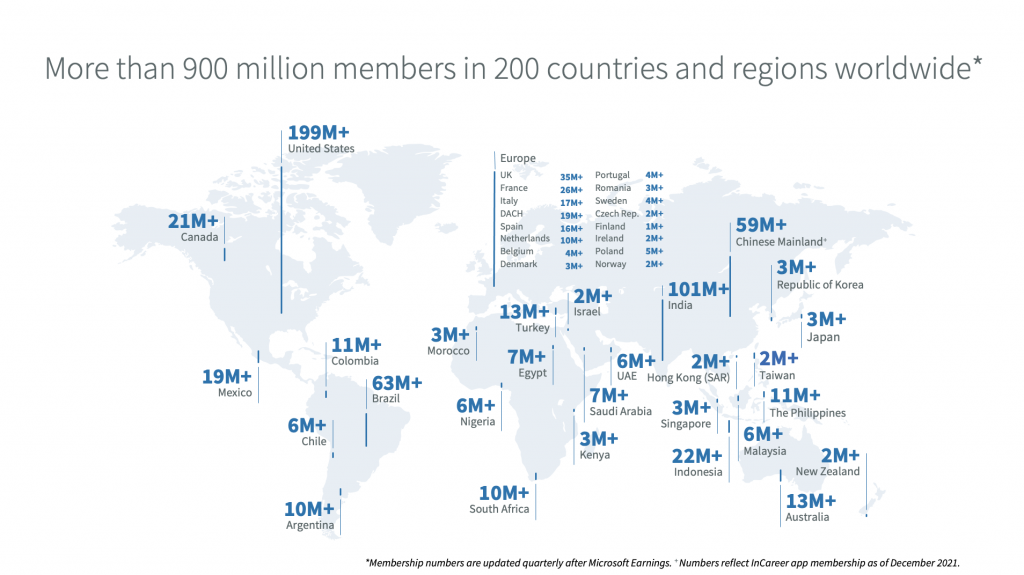
Source: Sprout Social
Share updates about your projects, write posts about industry trends, or create short explainer videos about your process.
Engage in group discussions and offer valuable insights.
Remember, it’s not about blatant promotion but building a reputation as an industry expert.
On Twitter, follow the thought leaders of the app development industry and engage with their content.
Use relevant hashtags to improve the visibility of your tweets.
It’s an ideal platform to stay updated with the latest trends and share bite-sized content with your followers.
For visually-driven platforms like Instagram, consider sharing behind-the-scenes content or infographics that simplify complex app development concepts.
Instagram Stories and IGTV are excellent features to connect with your audience in a more casual and direct manner.
Don’t forget Facebook Groups. Join groups where your prospective clients might hang out and actively participate in discussions. There are countless groups dedicated to startups, tech news, and entrepreneurial journeys where your prospective clients could be lurking.
The key to success on social media is consistency, engagement, and authenticity.
And remember: It’s not just about selling, it’s about creating valuable relationships and establishing trust.
So make sure your messages are not just broadcasts, but the start of a two-way conversation.
Pay to Get Clients – Advertising PPC
While organic efforts play a crucial role in attracting clients, there’s no denying the power of paid advertising, specifically Pay-Per-Click (PPC) advertising. PPC allows you to target specific demographics, making it a valuable tool in your client acquisition strategy.
Platforms like Google AdWords and Microsoft Ads help you put you in front of the right eyes at the right time. By targeting keywords related to app development, you can ensure your ads appear when prospective buyers are actively searching for them.
Similarly, social media platforms offer their own PPC advertising options. LinkedIn, known for its professional network, can be particularly effective if you’re targeting businesses.
What’s remarkable about PPC advertising is its ability to provide instant visibility.
Unlike SEO, which is a long-term game, PPC can get you quick results.
However, bear in mind that it requires investment and careful management to ensure a good return on your ad spend.
Crafting compelling ad copy and designing eye-catching visuals are also crucial elements of a successful PPC campaign. Test different messages and visuals to see what resonates best with your audience.
In conclusion, combining your organic efforts with strategic PPC campaigns can accelerate your client acquisition process.
It’s about being present everywhere your prospective buyers are looking – in their search results, on their feeds, and even in their email inboxes.
So, don’t shy away from investing in PPC.
It might just be the push your business needs to reach the clients waiting on the other side of the screen.
Exploit Freelance Platforms
While building a strong online presence and using advertising strategies can bring buyers to your doorstep, there’s another path you can take – going where the buyers are already looking.
Enter the world of freelance platforms.
Sites like Upwork, Freelancer, and Fiverr are bustling marketplaces teeming with clients searching for app developers.
These platforms allow you to showcase your software developer skills, bid on projects, and build a reputation through customer reviews.
To thrive on these platforms, it’s crucial to create a compelling profile.
Highlight your skills, experience, and past projects.
Don’t forget to mention your unique value proposition – what sets you apart from other app developers?
Another essential element is crafting a persuasive proposal.
When bidding on a project, don’t just list your qualifications.
Instead, address the client’s needs and show them how you can solve their problems.
But remember, competition on freelance platforms can be fierce.
It’s important to be patient and persistent.
Winning your first few projects might be challenging, but once you receive good reviews, more opportunities will follow.
Freelance platforms are like bustling marketplaces, where prospective buyers are already in the buying mindset.
So, pack your digital bags, set up your virtual stall, and be ready to meet your clients halfway.
This is yet another battlefield in the quest for clients, but with the right strategy, you can emerge victorious!
Extra tip: Send Personalized Proposals!
Sending personalized proposals is more than an extra tip – it’s a non-negotiable in your journey to securing more clients for your software development business.
Remember, every customer wants to feel special, and a tailored proposal does just that.
It shows prospective buyers that you’ve invested time in understanding their needs and are genuinely interested in providing a solution.
A personalized proposal doesn’t just reiterate your software development skills and experience but focuses on how these align with the client’s needs.
It outlines their problem and demonstrates your understanding of their goals.
Most importantly, it offers a clear solution – the unique way in which you can help them achieve their objectives.
When drafting a proposal, aim to strike a balance between professional and personable.
Be clear and concise, yet engaging.
Structure your proposal in a way that’s easy to follow: introduce yourself, summarize the client’s needs, provide your solution, and end with a call-to-action.
In the world of customer acquisition, your proposal is your handshake, your first impression, your pitch.
Make it count!
H2: Lead Scoring
As your efforts start to bear fruit and leads start to flow in, it’s crucial to focus your energy on the most promising ones. That’s where lead scoring comes in – a technique used to rank potential customers based on their perceived value to your business.
By assigning scores to your leads based on specific criteria such as their industry, size, engagement with your marketing content, etc., you can identify the ones that are more likely to convert into clients.
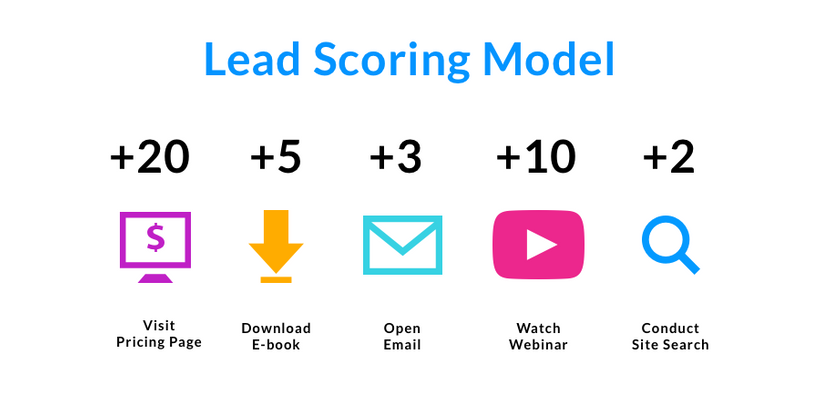
Source: Proof
For instance, a lead from a large company showing high engagement with your content might score higher than a lead from a small company with low engagement.
Using a system like this helps you prioritize your efforts, ensuring you dedicate the most time and resources to leads with the highest potential.
Lead scoring can be a game-changer for your business, allowing you to nurture high-value leads more effectively.
It helps you optimize your time, reduces wasted efforts on low-potential leads, and brings you closer to finding the right clients.
Measurement of Success and Testing New Theory
With all the groundwork done and strategies set in motion, it’s time to measure the fruits of your labor.
Tracking your success isn’t just about celebrating victories: it’s about learning, adjusting, and optimizing your approach.
Set key performance indicators (KPIs) to measure the effectiveness of your strategies.
These might include the number of new leads, conversion rates, website traffic, engagement, or customer satisfaction scores.
Analyzing these metrics will give you insights into what’s working and what’s not.
Don’t fear the figures that seem less promising.
Embrace them as opportunities for improvement.
If a certain approach isn’t delivering the expected results, try to understand why.
Look at the data, seek feedback, and adjust your strategies accordingly.
Remember, in this journey, every setback can be a setup for a comeback.
Furthermore, always be open to testing new theories.
The digital landscape is ever-changing, and so are customer behaviors.
Constantly learning, experimenting, and innovating will keep you ahead of the curve.
Remember, the path to finding clients for application development isn’t a straight line; it’s more of a spiral.
You’ll keep circling back, armed with more knowledge, refining your approach, and getting closer to your goal with each loop.
So keep track, stay flexible, and keep moving forward.
After all, in this grand adventure, each step taken, each lesson learned, is a victory in its own right, pushing you towards the ever-closer horizons of success.
Find High-Quality Prospects and Close Deals Faster with ZeroIn!
With all these expert tips in your arsenal, you’re well on your way to attracting a stream of clients for business.
But why stop there when you can supercharge your efforts with the right tool?
Allow us to introduce you to ZeroIn, a powerful ally in your quest for high-paying clients.
Much like the way you craft perfect codes, ZeroIn operates with precision, integrating seamlessly with LinkedIn to offer an all-encompassing view of your prospective clients.
We’re talking about more than just emails and phone numbers.
ZeroIn provides over 20 additional insights about your prospects and their organizations, giving you the upper hand in personalizing your outreach.
Afraid of inaccurate data?
Worry no more!
With ZeroIn’s stringent 10-step verification process, you can be assured of the authenticity of every email address. And let’s not forget its duplicate finder feature, which keeps your data pristine and up-to-date.
ZeroIn is more than just a tool; it’s a partner that grows with you.
Whether you’re a small or medium-sized business, it provides affordable, efficient email discovery and management solutions.
Just imagine, propelling your business growth is now within reach, just one email away.
Give ZeroIn a try today and see for yourself why so many companies use it!
Companies that use ZeroIn:
Contact us/Book a Demo/ Get 25 free Credits/ Create a Free Account and Get 25 credits!
